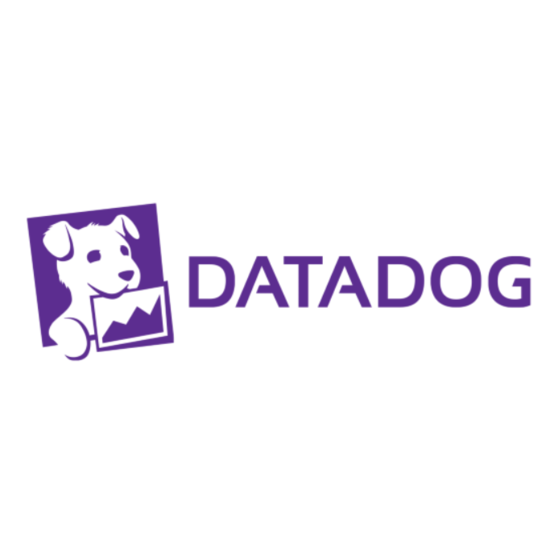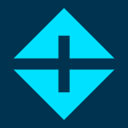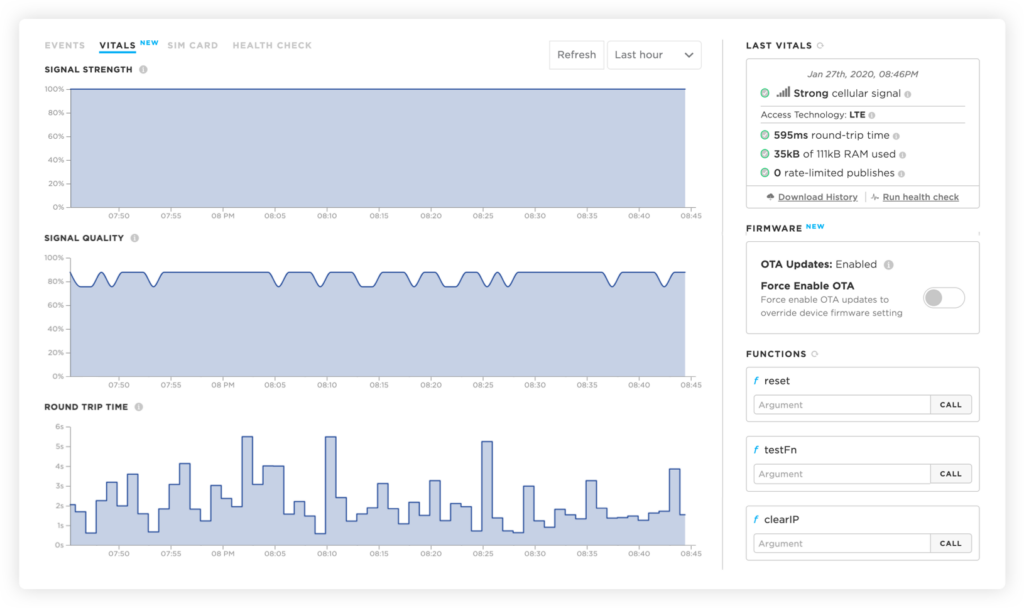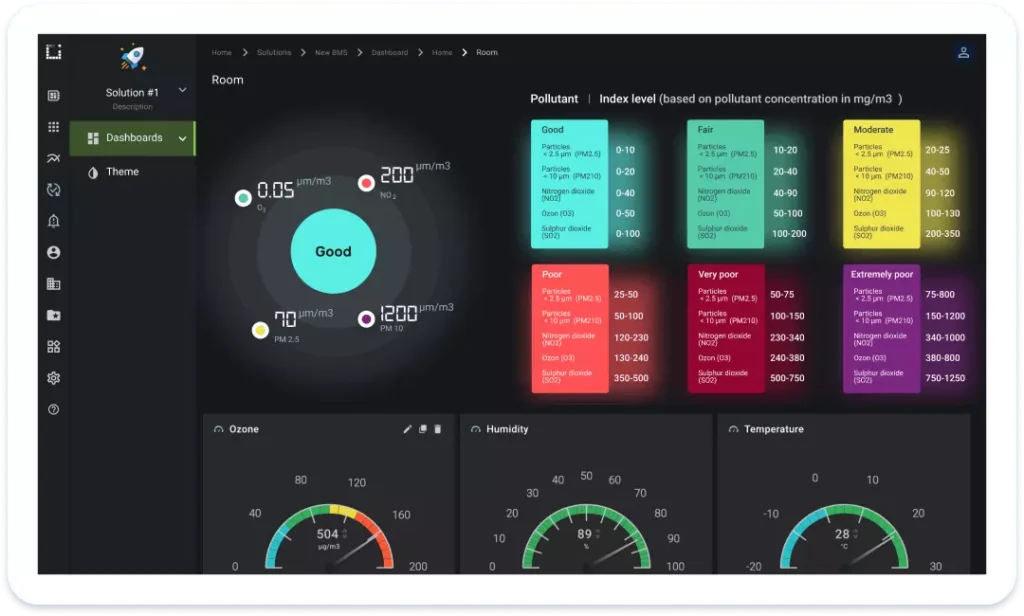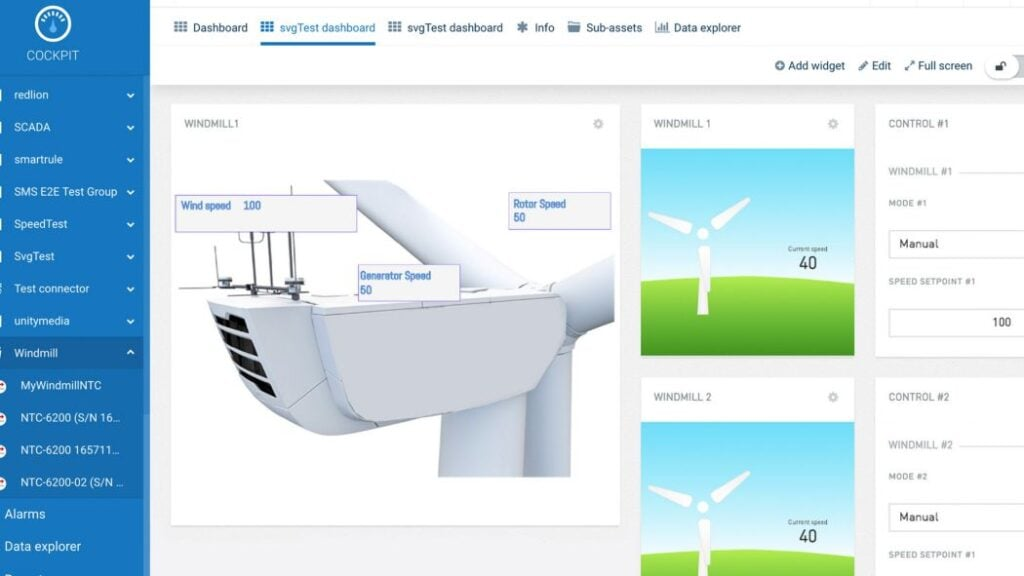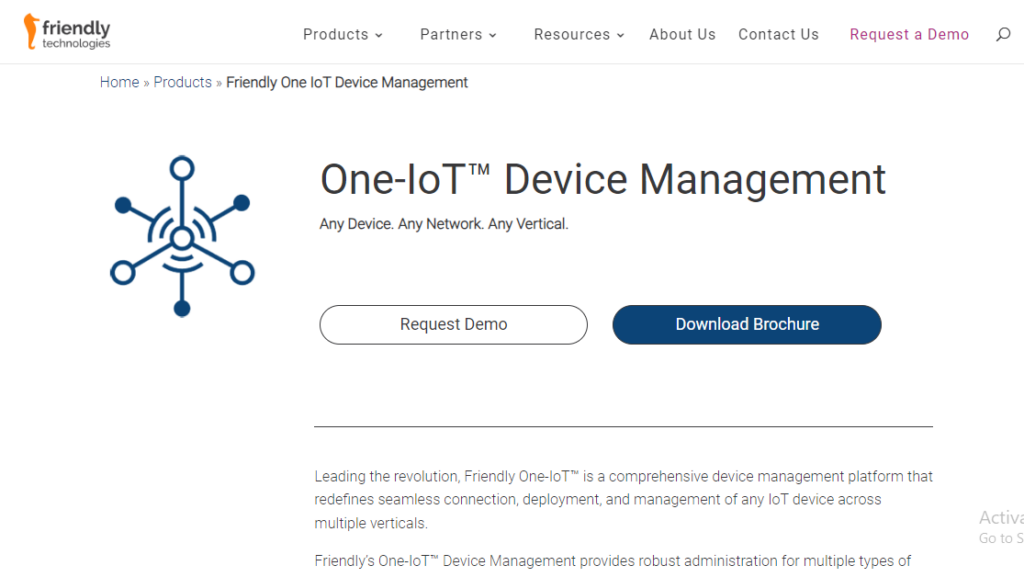Best IoT Device Management Platforms Shortlist
Here's my pick of the 10 best software from the 25 tools reviewed.
Our one-on-one guidance will help you find the perfect fit.
In the bustling world of IoT, device management platforms are essential tools that handle everything from provisioning to firmware updates. With end-to-end management, these platforms deal with IoT data, device data, notifications, and web services while incorporating advanced features like data analytics, digital twin technology, predictive analytics, and over-the-air updates. Whether you're working on-premise or leveraging the power of cloud computing through SaaS or PaaS, the integration of SDK, WiFi, and REST API ensures an impeccable flow of data streams.
The main pain points it solves include manual tracking of devices, time-consuming firmware updates, lack of real-time data analytics, and difficulties in scaling as your number of devices grows. If these are challenges you face, I'm confident that the options I've explored will guide you to the right solution for your needs.
What Is an IoT Device Management Platform?
An ioT device management platform is a suite of tools and services that facilitate the organization, monitoring, and remote management of various Internet of Things (IoT) devices within a network. From everyday appliances to complex industrial machinery, these platforms allow users to connect and control a wide range of smart devices.
Businesses, government organizations, healthcare providers, and individual enthusiasts leverage these platforms to deploy, maintain, and analyze IoT devices. By doing so, they can enhance efficiency, security, and functionality, making critical processes more responsive and adaptable to evolving needs and technological advancements.
Best IoT Device Management Platforms Summary
| Tool | Best For | Trial Info | Price | ||
|---|---|---|---|---|---|
| 1 | Best for real-time monitoring and performance metrics | 14-day free trial available | From $15/user/month | Website | |
| 2 | Best for developers and hardware-software interfacing | Not available | From $9/user/month (billed annually) + $30 base fee per month | Website | |
| 3 | Best for solution building and rapid deployment | Not available | From $0.50/device/month | Website | |
| 4 | Best for connectivity and bi-directional communication | Not available | From $25/month | Website | |
| 5 | Best for flexible integration and customization | Not available | From $10/user/month (min 5 seats) | Website | |
| 6 | Best for secure networking and IoT threat prevention | Not available | From $20/user/month (billed annually) | Website | |
| 7 | Best for scalability and large device management | Not available | From $20/user/month (billed annually) | Website | |
| 8 | Best for simplified device onboarding and management | Not available | Pricing upon request | Website | |
| 9 | Best for Apple device management and control | 14-day free trial | From $5.75/device/month (billed annually) | Website | |
| 10 | Best for scalable device management and real-time data integration | Not available | From $7/user/month (billed annually) | Website |
-

Docker
Visit WebsiteThis is an aggregated rating for this tool including ratings from Crozdesk users and ratings from other sites.4.6 -

Pulumi
Visit WebsiteThis is an aggregated rating for this tool including ratings from Crozdesk users and ratings from other sites.4.8 -

GitHub Actions
Visit Website
Best IoT Device Management Platforms Reviews
Datadog is a cloud-based monitoring and analytics platform that allows companies to observe their infrastructure and applications. By providing real-time data monitoring and performance metrics, Datadog excels in giving organizations the tools they need to keep an eye on every aspect of their systems, making it best for real-time monitoring and performance metrics.
Why I Picked Datadog:
I chose Datadog after a comprehensive analysis of various monitoring tools, judging its ability to provide robust real-time data insights. What makes it stand out is its extensive integration capabilities and easy-to-use dashboards. I have determined that Datadog is best for those who need constant surveillance over their systems and require detailed performance metrics to make informed decisions.
Standout Features & Integrations:
Datadog provides an array of features like real-time dashboards, customizable alerts, and detailed log management. These features allow users to keep track of every vital statistic about their system. In addition, Datadog integrates with over 400 popular technologies like AWS, Docker, Slack, and more, offering flexibility and convenience in monitoring diverse environments.
Pros and cons
Pros:
- Customizable dashboards for personalized monitoring
- Wide range of integrations with popular technologies
- Comprehensive real-time monitoring capabilities
Cons:
- Learning curve for users new to system monitoring tools
- Pricing may be expensive for smaller teams
- Can be overwhelming for small businesses due to its extensive features
Particle provides an all-in-one platform that focuses on simplifying the development and deployment of IoT devices. It offers a suite of hardware and software tools specifically tailored to developers, emphasizing excellent hardware-software interfacing, hence it's best for developers and those needing to work closely with hardware and software interactions.
Why I Picked Particle:
I chose Particle because of its unique concentration on both the hardware and software aspects of IoT development. In my comparison and judgment of various platforms, Particle stood out for its fully-integrated approach that aids developers in creating, deploying, and managing IoT solutions with less complexity.
Its emphasis on developer experience makes it best for those who require a cohesive environment for hardware-software interfacing.
Standout Features & Integrations:
Particle's standout features include an integrated development environment (IDE), pre-certified IoT hardware, and secure and scalable connectivity solutions. These allow developers to have a consistent experience from prototyping to production.
Its integrations include support for popular cloud platforms and developer tools, such as AWS, Azure, and Google Cloud, providing a versatile environment that adapts to different project needs.
Pros and cons
Pros:
- Wide range of integrations with major cloud providers
- Secure and scalable connectivity options
- Comprehensive hardware-software support
Cons:
- Potential additional costs for hardware components
- May be overkill for very simple projects
- Learning curve for those new to IoT development
Microsoft Azure IoT Central is a fully managed IoT service that enables users to quickly build and deploy IoT solutions. By offering a simplified way to create and manage IoT devices, applications, and solutions, Azure IoT Central is best for solution building and rapid deployment for both small and large-scale projects.
Why I Picked Microsoft Azure IoT Central:
I chose Microsoft Azure IoT Central after carefully comparing its capabilities for solution building with other tools on the market. What made it stand out for me is its straightforward approach to IoT solution design, which allows for rapid deployment.
I determined that this tool is best for those who want to build and deploy IoT solutions quickly without the need to manage the underlying infrastructure.
Standout Features & Integrations:
Azure IoT Central includes features such as template-based solution building, device management, and telemetry data visualization. These features streamline the creation and deployment of IoT solutions. Integrations with other Azure services like Azure Logic Apps and Power BI enhance its capabilities for automation, analytics, and reporting.
Pros and cons
Pros:
- Extensive integrations with other Azure services
- Scalable to both small and large projects
- Simplified approach to solution building and deployment
Cons:
- Additional costs can accumulate with increased complexity and usage
- Requires understanding of the Azure ecosystem
- May lack flexibility for highly customized solutions
Microsoft Azure IoT Hub is a managed service that acts as a central message hub for bi-directional communication between IoT applications and the devices they manage. By providing secure and reliable communication between millions of IoT devices, Azure IoT Hub makes it the best for connectivity and bi-directional communication within various IoT scenarios.
Why I Picked Microsoft Azure IoT Hub:
I chose Microsoft Azure IoT Hub after judging its ability to deliver reliable connectivity and absolute bi-directional communication for IoT devices. It's the selection for this list due to its compatibility with various protocols, robustness in handling device-to-cloud and cloud-to-device messages, and integration with other Microsoft Azure services.
This tool is best for organizations looking for an efficient way to manage connectivity and enable real-time communication between devices and applications.
Standout Features & Integrations:
Azure IoT Hub offers features like device authentication, twin properties to store device metadata, and the ability to run cloud logic in response to device events. These features enable comprehensive device management.
Integration with Azure services like Azure Functions, Stream Analytics, and Power BI allows for powerful data processing and analytics capabilities.
Pros and cons
Pros:
- Strong integration with other Azure services
- Comprehensive device management features
- Reliable and secure bi-directional communication
Cons:
- Limited customization options compared to open-source alternatives
- Pricing can be less predictable for very large deployments
- May require some familiarity with Azure's environment
Kaa Enterprise IoT Platform shines in the areas of flexible integration and customization. Designed to connect a wide array of devices while allowing deep customization, Kaa is the go-to platform for those seeking to tailor their IoT system exactly to their unique needs, reinforcing its place as the best for flexible integration and customization.
Why I Picked Kaa Enterprise IoT Platform:
I chose Kaa Enterprise IoT Platform after a rigorous evaluation of various tools focusing on customization and integration flexibility. Kaa stood out for its ability to mold itself to specific business requirements, offering not just connectivity but a level of customization that's hard to find elsewhere.
This flexibility is why I consider it best for those who need to shape their IoT environment in line with unique project demands.
Standout Features & Integrations:
Kaa's standout features include its open-source nature, allowing a wide scope of modifications and adaptations. The platform is designed to enable swift integration with various IoT protocols, making the customization process even more streamlined. Integrations include compatibility with major cloud providers, as well as MQTT, CoAP, and other IoT protocols, offering a vast and varied ecosystem to work within.
Pros and cons
Pros:
- Open-source architecture for added adaptability
- Broad range of integrations available
- Unmatched flexibility in customization
Cons:
- Limited built-in analytics capabilities
- Not suited for quick, out-of-the-box implementations
- Might require a skilled team to leverage customization
Palo Alto offers robust solutions for secure networking and IoT threat prevention. Focusing on comprehensive protection across different environments, its solutions are particularly aimed at organizations that need advanced security features, justifying its position as the best for secure networking and IoT threat prevention.
Why I Picked Palo Alto:
I chose Palo Alto after comparing various security solutions and finding that its offerings provide a multifaceted approach to secure networking and IoT protection. What makes Palo Alto different is its focus on utilizing machine learning and analytics to predict and prevent potential threats.
Its holistic approach and constant vigilance against emerging threats make it best for organizations that prioritize top-tier security measures in their IoT deployments.
Standout Features & Integrations:
Palo Alto's standout features include AI-driven threat detection and prevention, adaptive authentication, and secure VPN access. These features enable it to provide a secure environment without compromising on efficiency or functionality.
Integrations are extensive, including compatibility with major cloud providers, other security platforms, and even custom solutions via its well-documented APIs.
Pros and cons
Pros:
- Robust VPN features for remote access
- Extensive integrations with existing systems
- Comprehensive threat prevention and detection
Cons:
- Higher price point may be a barrier for smaller organizations
- May require specialized staff for optimal configuration
- Can be complex to set up
Cumulocity IoT is a powerful platform engineered to handle scalability and the management of a vast array of devices. Its core strength lies in supporting organizations that require extensive device handling, positioning it as the best solution for scalability and large device management needs.
Why I Picked Cumulocity IoT:
I chose Cumulocity IoT after carefully comparing its scalability features with other platforms. Its ability to efficiently manage a large number of devices without compromising performance truly stands out. This specific focus on scalability and large device management aligns it perfectly with enterprises or projects requiring the handling of vast IoT networks, justifying why it's the best for these use cases.
Standout Features & Integrations:
Cumulocity IoT offers remarkable scalability features, including auto-discovery of devices and flexible data models, which enable it to adapt and grow with organizational needs. Its real-time analytics and comprehensive security measures add value to its large device management capabilities.
It offers integrations with major cloud providers like AWS and Microsoft Azure, as well as compatibility with MQTT, REST, and other communication protocols.
Pros and cons
Pros:
- Diverse integrations with major cloud services
- Robust support for large device management
- Exceptional scalability for growing needs
Cons:
- Limited customization in the base tier
- Might be overkill for smaller projects
- Steeper learning curve for newcomers
One-IoT is an IoT platform that aims to simplify the onboarding, management, and maintenance of various IoT devices. With a focus on easing the integration of devices and providing a clear dashboard for control, it fits best for those looking for simplified device onboarding and management without technical complexity.
Why I Picked One-IoT:
I chose One-IoT after thoroughly examining different platforms for their simplicity and effectiveness in managing IoT devices. One-IoT stood out for its user-friendly interface and comprehensive support, particularly for those who may not have advanced technical skills.
I determined that this tool is best for businesses or individuals who require a straightforward approach to device onboarding and management.
Standout Features & Integrations:
One-IoT provides features such as drag-and-drop device onboarding, real-time data visualization, and multi-protocol support. These are essential for those looking to quickly and effortlessly manage IoT devices. Its integrations with major IoT protocols and compatibility with various hardware manufacturers ensure a versatile and adaptable platform for different IoT needs.
Pros and cons
Pros:
- Offers real-time data visualization for easy monitoring
- Compatible with various devices and protocols
- Simplified onboarding process with drag-and-drop functionality
Cons:
- Limited customization options compared to other specialized platforms
- Might be too basic for highly complex IoT systems
- Lack of detailed pricing information available online
Jamf Pro is a comprehensive management system designed specifically for Mac, iPhone, iPad, and Apple TV devices within organizations. By providing robust tools to deploy, secure, and manage Apple devices, it offers a solution that is tailored to companies using or planning to use Apple products, thereby making it best for Apple device management and control.
Why I Picked Jamf Pro:
I chose Jamf Pro after considering and comparing various device management tools. What makes Jamf Pro stand out is its focus on providing an exclusive management solution for Apple devices, which is not commonly found on other platforms.
This specificity in its design and functions convinced me that it's best for businesses and organizations that want to have precise control over their Apple devices.
Standout Features & Integrations:
Jamf Pro's standout features include automated device enrollment, app deployment, security compliance, and inventory management. These features allow IT teams to efficiently handle all aspects of their Apple device fleet.
Integrations with Apple's Device Enrollment Program (DEP) and Volume Purchase Program (VPP), as well as compatibility with common enterprise solutions like Microsoft Intune, ensure a coherent and streamlined workflow.
Pros and cons
Pros:
- Strong integration with Apple's native programs
- Comprehensive set of management and security tools
- Designed exclusively for Apple devices
Cons:
- Some features might be unnecessary for small-scale deployments
- May have a learning curve for those unfamiliar with Apple's ecosystem
- Only suitable for managing Apple devices
Best for scalable device management and real-time data integration
Google Cloud IoT Core is a fully managed service that allows you to easily connect and manage various IoT devices. By offering scalable device management and real-time data integration, it fits the essential need for robust and flexible IoT solutions. This functionality makes it the best option for those looking to handle large-scale device networks with real-time insights.
Why I Picked Google Cloud IoT Core:
I chose Google Cloud IoT Core because of its capabilities in effortlessly managing large numbers of connected devices, and its adaptability in real-time data processing. What makes it stand out is its scalable architecture, fitting diverse needs.
I firmly believe it's best for organizations that require real-time data integration from various IoT devices, thanks to its unparalleled scalability and management tools.
Standout Features & Integrations:
Google Cloud IoT Core offers a secure connection between IoT devices and the cloud, utilizing protocol endpoints that automatically load-balance traffic. Its data storage and processing capabilities offer versatile options for businesses. Integrations include powerful data tools like BigQuery, Dataflow, and several AI platforms to drive intelligent decision-making from the device data.
Pros and cons
Pros:
- Strong security measures for device communication
- Integrates with a wide range of data processing tools
- Scalable architecture fits various business needs
Cons:
- Pricing can become steep with additional integrations and features
- Some features might be overkill for smaller projects
- Can be complex to set up initially
Other IoT Device Management Platforms
Below is a list of additional IoT device management platforms that I shortlisted, but did not make it to the top. They are definitely worth checking out.
- Losant IoT Platform
For visual workflow and real-time analytics
- AWS IoT Device Management
For comprehensive device tracking and lifecycle management
- IoT In a Box
Good for ready-to-use monitoring solutions
- Datablaze Voyager
Good for live fleet tracking
- Oracle IoT Cloud Service
Good for business process integration
- emnify IoT
Good for cloud-native communication
- Exosite ExoSense IoT
Good for industrial IoT applications
- Helium IoT Platform
Good for peer-to-peer network expansion
- Bosch IoT Suite
Good for connecting cross-domain devices
- C3 AI
Good for enterprise AI applications
- IBM Watson IoT Platform
Good for cognitive IoT services
- Telit IoT platform
Good for secure data management
- Ubidots
Good for visualizing data insights
- Ayla Networks IoT Platform
Good for device virtualization
- Hologram
Good for cellular network agility
Selection Criteria For Choosing IoT Device Management Platform
When it comes to selecting the right IoT (Internet of Things) device management platform, the decision-making process can be complex and multifaceted. IoT platforms are crucial in integrating and managing connected devices within various industry applications. I've evaluated dozens of IoT development platforms and tools, focusing on core functionality, key features, and usability, which are essential for any organization looking to optimize its IoT operations. Here's what I focused on:
Core Functionality
- Device Connectivity: Ability to connect various types of devices across different protocols.
- Data Management: Handling and storage of data from connected devices.
- Security: Ensuring the integrity and confidentiality of data.
- Integration with Existing Systems: Capability to mesh with existing enterprise systems.
- Real-time Monitoring: Providing real-time insights and tracking of connected devices.
Key Features
- Scalability: Adapting to increasing numbers of connected devices without losing performance.
- Interoperability: Ability to work with different types of devices, platforms, and services.
- Automation and Control: Providing automated responses and control over connected devices.
- Compliance and Standards Alignment: Meeting legal and industry-specific requirements and standards.
- Analytics and Insights: IoT analytics platforms contain tools to analyze data and extract valuable insights for decision-making.
Usability
- User Interface (UI): A clean and intuitive interface that allows users to manage and monitor devices easily. For example, dashboards with live device status.
- Onboarding Process: A streamlined onboarding process that includes detailed tutorials, support documents, or even training programs for quicker user adoption.
- Customer Support: Access to responsive and knowledgeable support teams, especially critical for complex deployments and troubleshooting.
- Customizability: The flexibility in adapting the platform to specific needs and workflows, including customized alerts, reports, and controls.
Choosing the right IoT platform requires careful consideration of these factors to ensure alignment with organizational goals, industry requirements, and scalability demands.
Other IoT Device Management Platform Reviews
Summary
Selecting the right IoT device management platform can be a complex task, but understanding your specific needs and requirements will guide you to the right choice. The platforms available in the market vary in their core functionalities, key features, usability, and pricing, so it's essential to align these factors with your use case.
Key Takeaways
- Core Functionality: Evaluate the platform's capabilities in device connectivity, management, security, and scalability. The platform must fulfill the essential functions related to your IoT devices' lifecycle management.
- Usability and Features: Look for IoT platforms with user-friendly interfaces tailored to your specific use cases, such as drag-and-drop tools, easy filtering, or tagging interfaces. The features should align with your project's needs, like role-based access, proper onboarding resources, or extensive support documentation.
- Pricing Considerations: Understand the different pricing models and choose one that fits within your budget. The cost may vary widely, so consider the cheapest and most expensive options and assess if there are free tools that meet your needs.
By carefully considering these aspects, you'll be well on your way to selecting the IoT device management platform that fits best with your organization's goals and requirements.
Most Common Questions Regarding IoT Device Management Platforms
What are the benefits of using an IoT device management platform?
IoT device management platforms offer several key benefits, including:
- Streamlined Management: They allow centralized control over various devices, making it easier to monitor and manage them.
- Enhanced Security: By maintaining up-to-date device firmware and security configurations, these platforms ensure the protection of data and connected devices, bolstering the operations of integrated IoT security platforms.
- Real-time Insights: They offer real-time analytics and insights into device performance, usage, and status.
- Scalability: These tools can handle a growing number of devices, allowing organizations to expand their IoT ecosystem without extensive overhead.
- Integration with Existing Systems: They can integrate extensively with existing business applications, creating a cohesive workflow.
How much do IoT device management platforms cost?
The pricing for IoT device management platforms varies widely based on the features, the number of connected devices, and the specific needs of the organization.
What are the common pricing models for IoT device management platforms?
The typical pricing models include subscription-based (monthly or annually), pay-as-you-go (based on the number of connected devices or data usage), or customized enterprise packages. Some IoT software solutions may offer tiered pricing based on features and scalability needs.
What is the typical range of pricing for IoT device management platforms?
Pricing can range from as low as $10 per device per month to several thousands of dollars for enterprise-level solutions. The cost will largely depend on the complexity, features, and scale of deployment.
Which are the cheapest and most expensive IoT device management platforms?
The cheapest might be platforms like Ubidots, starting at a lower price point for basic functionalities. The most expensive could include complex solutions from major providers like IBM Watson IoT Platform, which offers extensive features and support for large-scale deployments.
Are there any free tool options available for IoT Device Management?
Some platforms may offer free tiers or trial periods for evaluation purposes. However, these usually come with limitations in terms of features, the number of connected devices, or support.
Is customer support included in the pricing of IoT device management platforms?
Customer support may or may not be included in the pricing. Some platforms offer basic support within the subscription fee, while others may charge extra for premium or 24/7 support.
Can I customize my IoT device management platform according to my specific needs?
Yes, many IoT device management platforms allow for customization. Whether it’s tailoring dashboards, setting up custom alerts, or integrating with specific business applications, these platforms often provide the flexibility to adapt to unique organizational requirements. However, significant customization may require professional services or additional fees.
What Do You Think?
If you have any experience with other IoT device management platforms that you believe should be included in our list, I invite you to share your insights and suggestions. Your hands-on experience and knowledge can provide invaluable guidance for others in the community. Feel free to reach out with your recommendations, and let's continue to build a comprehensive resource together!


